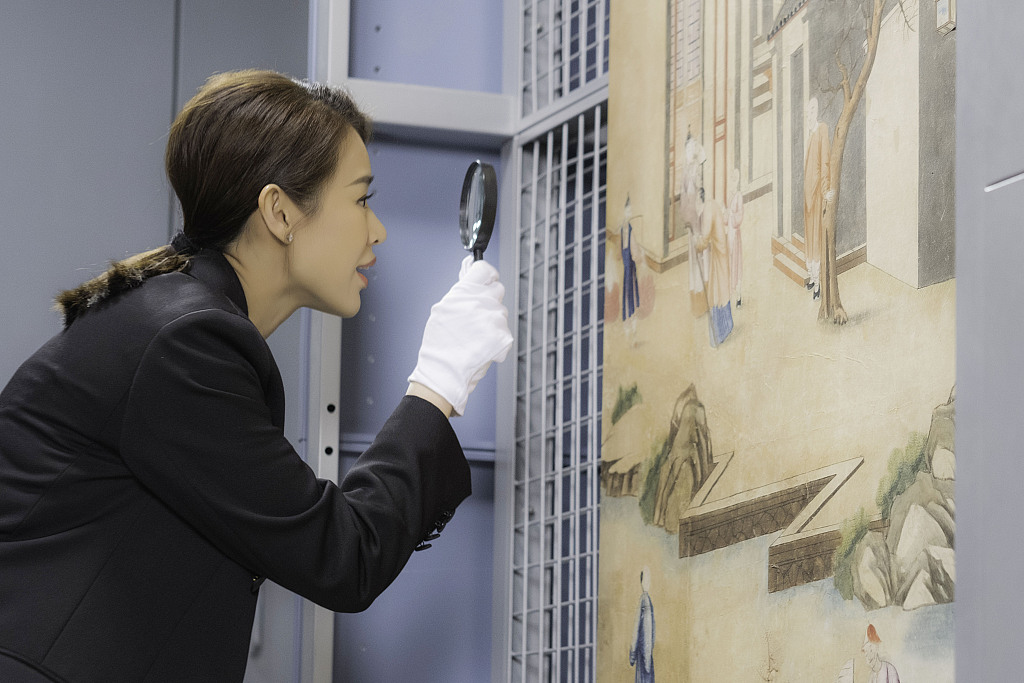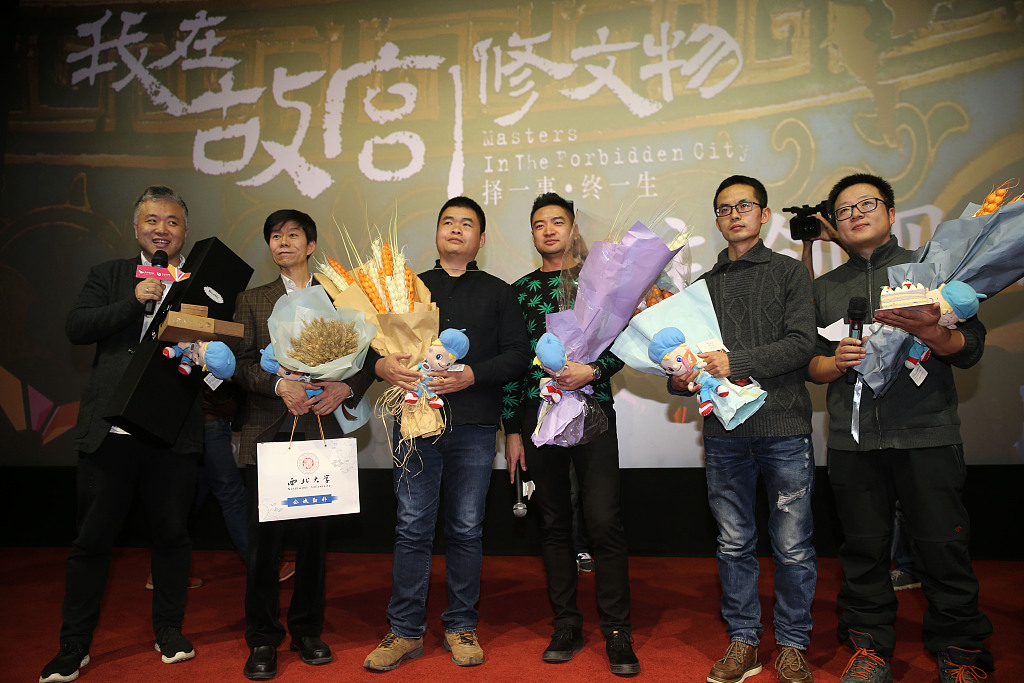
This is People's Daily Tonight, your news source from China.
_____
Palace Museum uses new technology, youthful attitudes to pass on vital culture
China’s Palace Museum recently released a comic series targeting at the country’s young generation. It introduces a story of a group of people who trek thousands of miles carrying 13,491 boxes of valuable relics from the Palace Museum to avoid warfare. These people leave China, but they are waiting for a time in the future when they can make a powerful comeback.
In recent years, the Palace Museum has turned “younger” in the eyes of the people. It released the cultural exploration TV program National Treasure, made a documentary featuring the Forbidden City's cultural relics and their restorers' lives, promoted cultural products on e-commerce platforms, and posted interesting memes on social media.

Screenshot from the TV program National Treasure. (Photos: VCG)
Entering the internet era, the Palace Museum is seemingly aging in reverse. It is getting closer to the public, especially the young generation.
Chinese President Xi Jinping once compared museums to schools. The ancient buildings, relic collections, as well as the intelligence of the scholars and experts are unique resources of the Palace Museum.
The museum believes that the public is the most important factor in transforming these resources into innovative and creative development, in that it is the people that preserve the relics and study the history.
Xi proposed to make cultural relics, history and culture speak, so as to benefit millions of people in both the modern world and the future.

The crew who created the documentary featuring the Forbidden City's cultural relics and their restorers' lives.
With such a mindset, the Palace Museum is placing its hope on the young generation. From the cute cultural products, to the “guard cats” patrolling in the former royal grounds, and the humorous TV series it co-produced with Beijing TV, the Palace Museum has changed its solemn and official image, focusing on the interests of the young people. By getting closer to the youth, the Palace Museum also regains its vitality.
“We offer what the young generation wants,” said Shan Jixiang, director of the Palace Museum. However, to serve the young people is not as simple as playing cute. It calls for in-depth study of their characteristics and demands, as well as the application of the internet’s social functions, so as to attract the young generation to participate in content production and introduce new energy into the cultural industry.

Showcase of the promoted cultural iterms.
The above-mentioned comic series is one of the attempts made by the Palace Museum in this direction. By cooperation with online platforms and holding comic competition, it solicited ideas from young internet users and incorporated their wisdom. By complying with the social characteristics of the internet era, the museum has achieved successful results in dissemination.
The crossover of information between the older and younger generations fills the cultural gap, and crossover in many industries is creating surprises.
The Palace Museum is currently going through digitalization. It not only places importance on the integration of the museum and society, but also the fusion of multiple disciplines and the fusion of traditional techniques and modern technologies, in a bid to build a new image for the museum.
These fusions and integrations have given a new life to the Palace Museum thanks to the synergy they create. It pleases many to see that the new model has inspired a batch of cultural organizations and museums in China, and even attracted many young people to apply for related jobs and degrees.

Showcase of the promoted cultural items.
Next year marks the 600th anniversary of the Palace Museum. The museum is unswervingly aiming to create a magnificent Forbidden City for the next 600 years.
However, what should be passed on for the next 600 years? This remains a major question for everyone engaged in the protection of traditional culture to ask. Should it be piles of cold relics or a vital culture?
The Palace Museum’s attempt has given a great answer that as an ancient “creation,” it has already won the warm acceptance of the modern world. The Forbidden City is not the oldest treasure in China, or the last one to make innovations. We have every reason to believe that the explorations initiated by the Museum will be followed and even transcended.
_____
And that’s People’s Daily Tonight. Thanks for joining us.
(Produced by He Jieqiong; text from People's Daily app)


